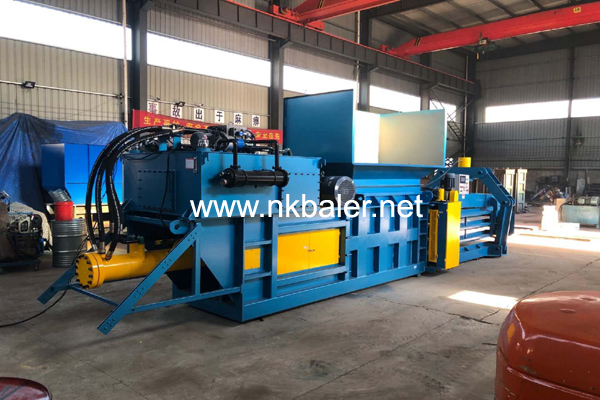
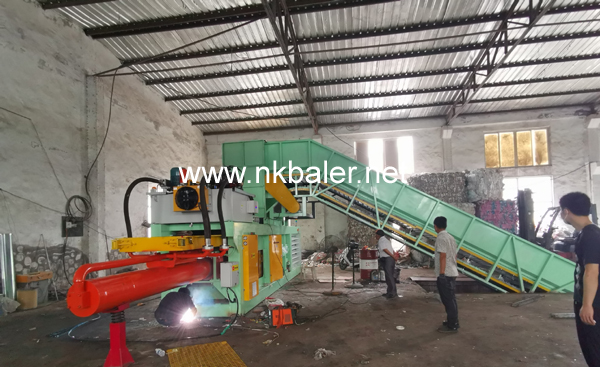
When selecting,one should also conduct thorough market research,compare products and quotes from different manufacturers to determine the option with the highest cost-performance ratio.
Loading Materials:First,the collected solid waste is loaded into the compression chamber of the baler. This is usually accomplished through manual feeding or an automatic conveyor belt,ensuring that the materials are evenly placed in the compression chamber.Starting the Compression Cycle:The operator starts the baler,and the hydraulic system begins to function. The compression head gradually moves,applying high pressure to the waste,compacting it into blocks. This process may take several minutes,depending on the performance of the baler and the type of waste.Banding and Securing:After being compressed into blocks,the baler automatically or manually uses plastic tie wires or other binding materials to secure the compacted waste,ensuring it does not loosen during transport or storage.Unloading the Block:Once banding is complete,the baler opens the compression chamber,and the operator can unload the compacted and banded waste block. Some efficient balers are equipped with automatic unloading features,which can directly transport the block to a designated storage area.Cleaning and Maintenance:After using the baler,residual waste in the compression chamber should be cleaned,and necessary machine maintenance performed,such as checking hydraulic oil,filters,and the supply of tie wires,to ensure normal operation and extend the service life of the machine.
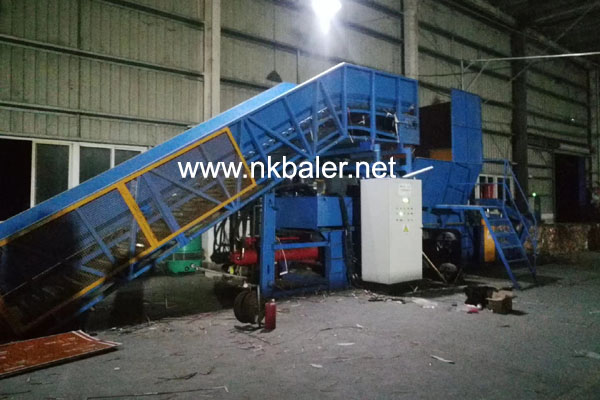
These steps ensure the efficient and safe operation of the solid waste baler,while also protecting the safety of the operators and the surrounding environment. Regular machine maintenance and operator training are key factors in ensuring the smooth progress of the handling process.
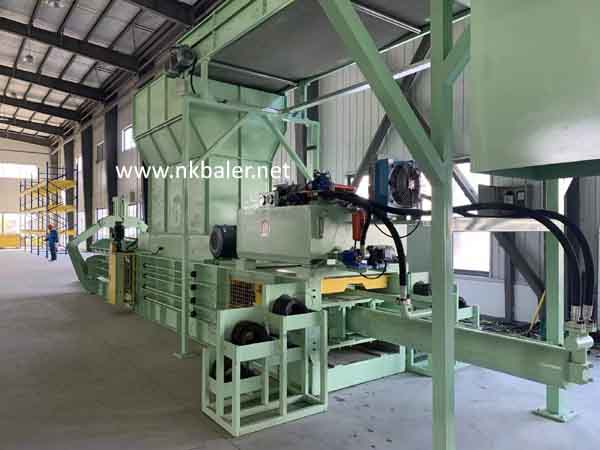
Preparation Check Power Cables:Ensure the three-phase power cables are correctly connected to avoid motor reversal which could cause the oil cylinder to malfunction.Add Oil:Fill with No.46 anti-wear hydraulic oil to about 10CM from the top of the tank to ensure good lubrication during machine operation.Clean Work Area:Keep the work area clean to prevent debris from interfering with operations and potential safety hazards.Loading Materials Uniform Filling:Fill the inner box evenly to avoid excessive height differences that could cause machine deformation or cylinder breakage.Prevent Leaks:Ensure all materials are inside the hopper to prevent extrusion deformation due to material leakage.Start Baling Start Motor:After starting the motor,let it idle for 30 seconds before pressing the handle to work,checking if the motor is functioning normally.Press Plate Operation:Once the press plate is fully lowered,it must return to its position.Stop applying pressure when the motor noise increases.Strapping Operation Open Door Check:Confirm that the rope slots in both the upper and lower pressing rows are clear to facilitate subsequent baler operations.Horizontal and Vertical baler:Use an alternating horizontal and vertical strapping method to form a well-patterned package,increasing baling stability.Completing Strapping Buckle Wire and Eject Package:After compression molding,perform wire threading and buckling operations,followed by ejection to complete the baling process.
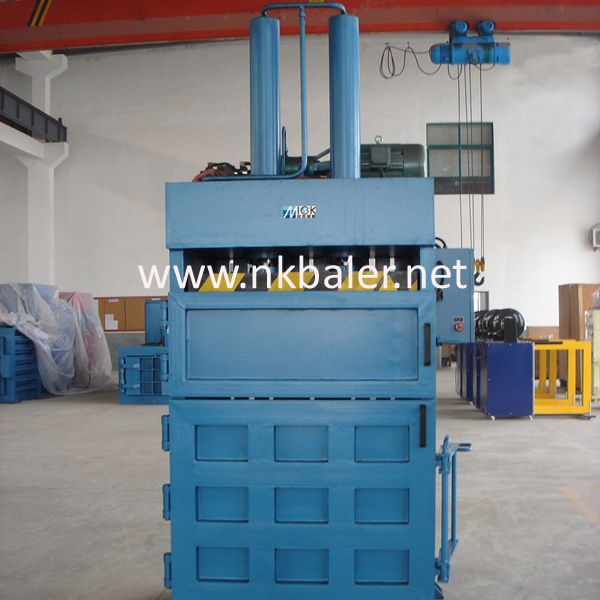
Operating a vertical hydraulic baling press for baler requires meticulous procedures.From preparation,loading materials,starting the bale,to baler operations,each step is important.Users should not only follow the correct operational procedures but also pay attention to safe operating practices and regular maintenance to ensure stable operation of the equipment and extend its service life.Through detailed explanations of the above steps,users can use the vertical hydraulic baling press more effectively,improving the efficiency and quality of item packaging.
Email:info@nkbaler.com Nickbaler888@gmail.com
WhatsApp: 008615021631102

